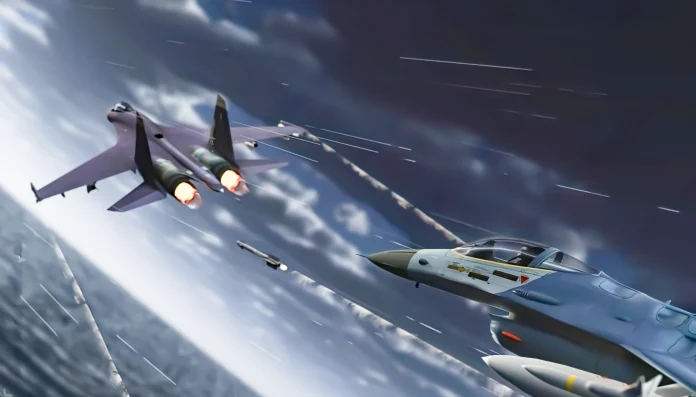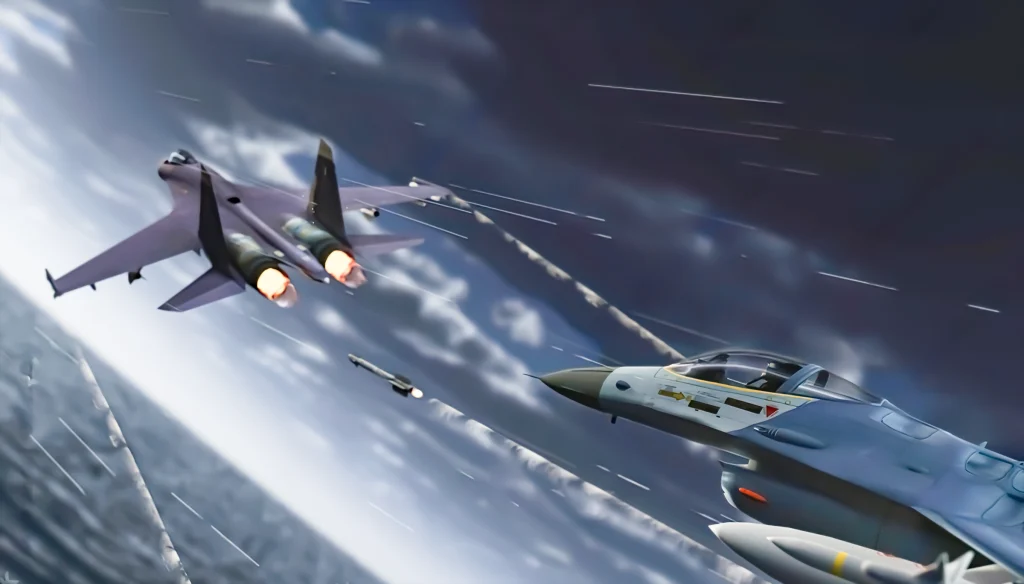
“The F-16 is no game changer until it is.” This aphorism, now commonly uttered in war room huddles, has been tested and rewritten by recent events over Ukraine’s tormented skies. In June 2025, a Ukrainian-piloted F-16 did what all sorts of military commentators long debated: it shot down a Russian Su-35, an instant hailed as historic first and potential harbinger of transformed airpower in Eastern Europe.
But it is more than the story of one jet and one missile. The fight just north of Kursk, deep within Russian airspace, is a microcosm of changing doctrines, technologies, and alliances. For defense and aeronautics technology enthusiasts, the conflict holds a treasure chest of details on how the new war is being re-scripted one flight at a time. Here are eight revelations of this epic air battle.
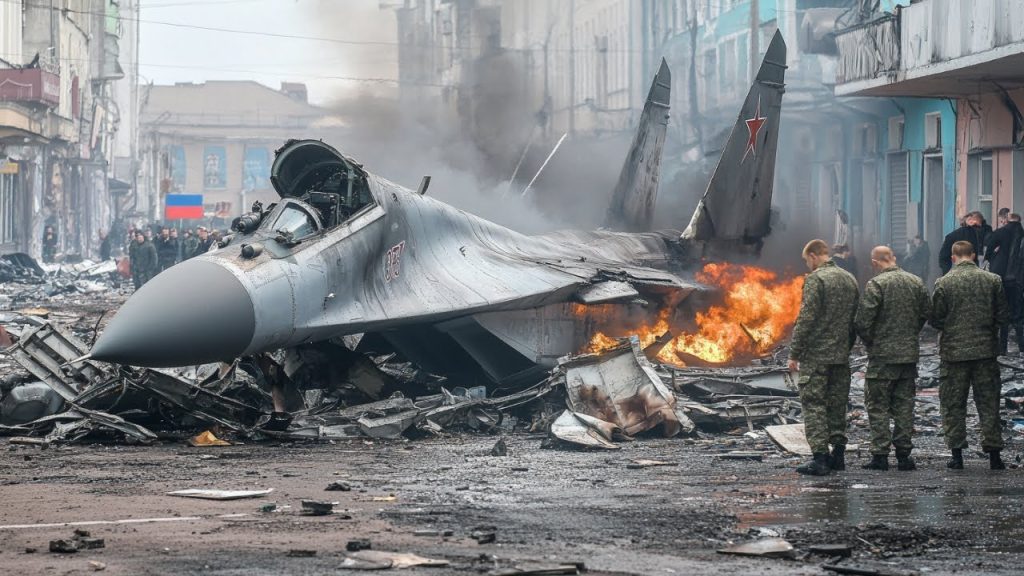
1. The Historic First: F-16 Shoots Down a Su-35 in Combat
The Ukrainian Air Force, using newly purchased F-16s, struck a blow against Russian troops near the Kursk area on June 7, 2025. In a very coordinated attack, a Ukrainian pilot fired an AIM-120 missile that shot down a Russian Su-35-one of Russia’s top-of-the-line fighters at approximately 10 miles within Russian territory. The incident, which was confirmed by sources such as Bild and Reuters, was called “a historic moment” by Ukraine Fights Telegram. The pilot ejected, but the downing of the Su-35 shocked military circles. Not only was it the first-ever confirmed Su-35 kill by an F-16 in Ukrainian hands, but it underlined the capabilities of Western-supplied platforms to change the direction of the air war.
To most viewers, this was not merely a tactical triumph but symbolic, demonstrating the increased maturity of Ukraine’s air force and the danger now confronting Russian pilots over the border.

2. Saab 340 AEW&C: Game-Changing Eye in the Sky
Propelling the kill was a game-changer technology multipler: Sweden’s Saab 340 AEW&C (Airborne Early Warning and Control) aircraft. Saab 340 spotted Su-35 at 200–300 kilometers, and it provided the pilot of the F-16 with live targeting information. As has been indicated by Canadian pilot Marc Brooks, “The real issue is that the Swedish-made AWACS system can now detect Russian planes in real time hundreds of kilometers away and guide missiles fired by the F-16.” The Su-35 didn’t even realize it was under fire.”The real problem is that the Swedish-made AWACS platform can now track Russian planes in real time hundreds of kilometers away and allow F-16-launched missiles. The Su-35 didn’t even realize it was being attacked. This conjunction of Western reconnaissance with the operations of fighters reveals the way air combat today is all about networks, not machines.”
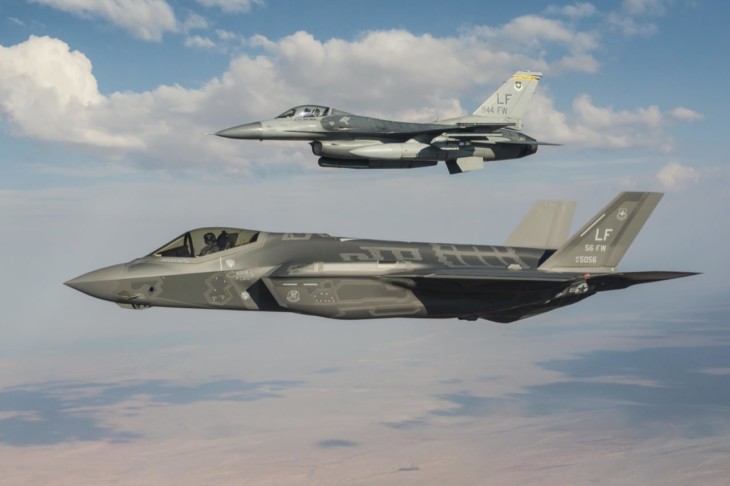
3. F-16 vs. Su-35: Doctrine and Generations Collide
The Su-35 Flanker-E is conventionally described as Russia’s finest air superiority fighter with Mach 2.25 speed, 17,000-pound payload, and thrust-vectoring maneuverability. The F-16, on the other hand, features sophisticated radar, greater agility, and a lighter, less detectable aircraft. As Voice of America learned from Dan Hampton, former USAF Lieutenant Colonel, “Our planes are more durable.”. I would not bet in combat against the Su-35 or any of the Russian-produced airplanes.”Our aircraft are tougher. I would not bet in combat against the Su-35 or any of the Russian-produced airplanes. But perhaps the actual advantage is what these platforms are used to do.” The F-16’s radar and missile package enable it to see and engage targets before being seen, whereas the Su-35’s size and absence of AESA radar make it an easy target for the West’s advanced tactics. The war is as much about doctrine and pilot habituation as it is hardware.

4. Electronic Warfare: The Invisible Battlefield
Electronic warfare (EW) is currently going to be the deciding factor in Ukraine’s adoption of the F-16. The United States Air Force, in collaboration with Norway and Denmark, reprogrammed Ukraine’s F-16s EW systems to combat Russian jamming and radar threats.reprogrammed Ukraine’s F-16s EW systems to combat Russian jamming and radar threats The leader of the 68th Electronic Warfare Squadron stated, “One F-16 with a reprogrammed pod won’t win you air dominance, but it might give you a pocket of air superiority for a moment of time to get to an objective that has strategic importance and impact.”
This ongoing adaptation is vital, with cat-and-mouse on both sides playing high-stakes electromagnetic warfare. The capacity for rapid upgrades and testing EW gear, backed by battlefield experience, is now the building block of contemporary air operations.

5. The Strength and Weaknesses of the F-16 in Ukraine
Although the arrival of the F-16 has bolstered Ukraine’s air defenses, its effect is still limited by quantity and logistics. To sum up, as of mid-2025, Ukraine had received roughly ten F-16s, with additional deliveries ordered from European donors. Each aircraft is an asset that is expensive and their tempo of operations is kept under control through maintenance, spare parts, and having to take periodic software updates most of which depend on U.S. assistance. Ukrainian Air Force spokesman Yuri Ignat conceded, “Ukraine’s F-16s are outmatched by Russian jets, missiles and air defenses.”
In spite of all these challenges, the F-16 has performed satisfactorily in intercepting cruise missiles and unmanned aerial vehicles and its deployment has made Russian pilots cautious closer to the front. However, without a bigger fleet and overall support system, the F-16 cannot guarantee air superiority on its own.
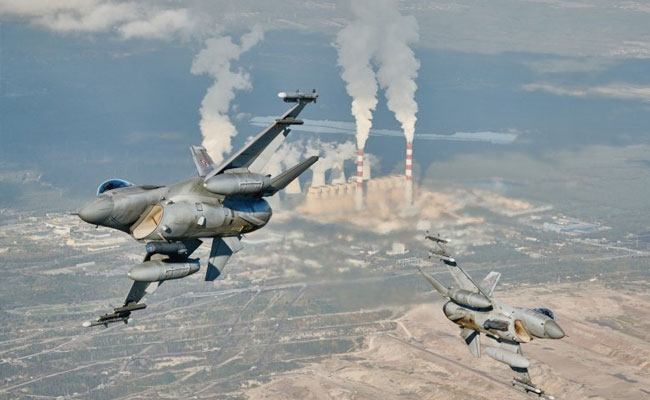
6. NATO Integration and the Symbolism of Western Airpower
F-16 deployment is not just a strategic move but a Western commitment signal that is strategic. As the Center for Strategic and International Studies puts it, deploying U.S.-made F-16 fighter jets in Ukraine “sends a strong message of U.S. and NATO commitment to help Ukraine defend its sovereignty.”sends a strong message of U.S. and NATO commitment to help Ukraine defend its sovereignty This inclusion is steadily drawing Ukraine into the U.S. and European defense community, updating its role of air force and making it congruent with the policy of NATO.
But the process is not unproblematic. Pilot retraining requirements, command structure redesign, and logistics reform are all formidable obstacles. The symbolism, however, is stark: Ukraine is no longer alone in the struggle for the skies.
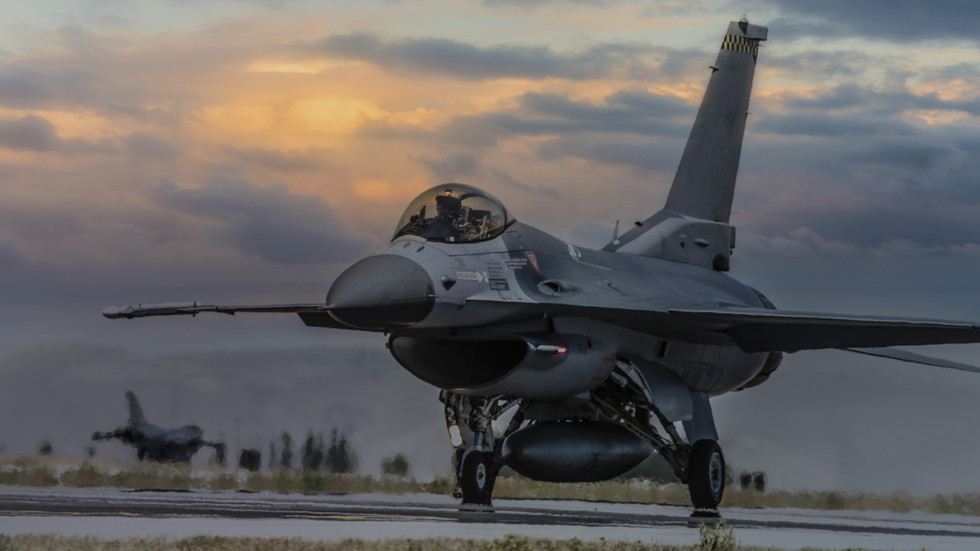
7. Training, Doctrine, and the Learning Curve
Converting from Soviet-era planes to F-16s is an enormous undertaking. There will be a steep learning curve for Ukrainian pilots in converting to Western avionics, tactics, and debriefing cultures. It would take three to five years for a pilot to become combat-qualified on the F-16, according to CSIS. The cost of training will be a major consideration and will most likely occupy a substantial percentage of the cost factor.
Initial setbacks, such as confirmed F-16 losses, underscore the difficulty of rapid integration. But with Ukraine’s air force learning on every sortie, pilots and maintenance personnel are building a foundation for sustained capability, mission by mission.

8. The Road Ahead: Localized Air Superiority and Strategic Impact
Ukraine’s air war today is characterized by parity neither enjoys uncontested superiority. Adding F-16s, particularly if combined with Western intelligence and ordnance, can lead to localized air superiority finite moments when Ukrainian forces are able to conduct operations with less chance of Russian air and missile attacks.localized air superiority These periods can prove decisive, clearing ground attacks or smashing Russian logistics.
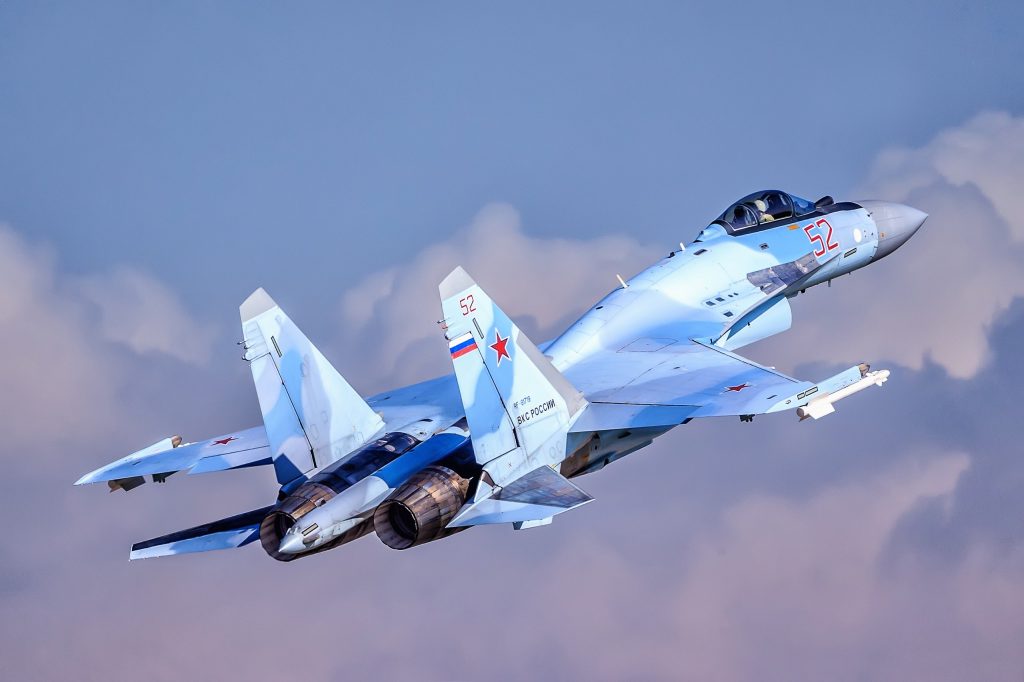
But to secure broad and lasting air superiority, considerably more of a fleet possibly as many as 216 F-16s will be needed and will need to be sustained propped up by the West. Meanwhile, with every successful battle, every destroy, every opportunity for learning, and every partner, Ukraine is getting better at the negotiating table.
The shoot-down of a Russian Su-35 by an Ukrainian F-16 is more than a front-page story it is a glimpse of the new air-war dynamics, where technology, alliances, and flexibility are as vital as planes. For defense and aviation enthusiasts, the fight off Kursk is a tutorial in the manner in which the contemporary wars are being fought and how, by way of good gear and allies, even a small group can tip the balance in the European skies.
